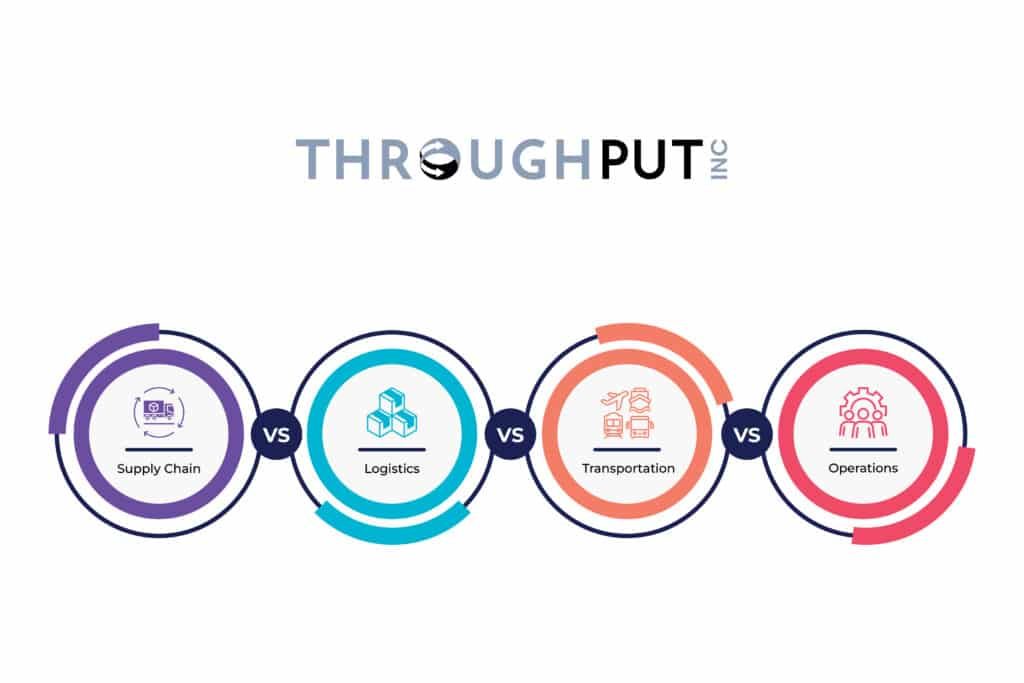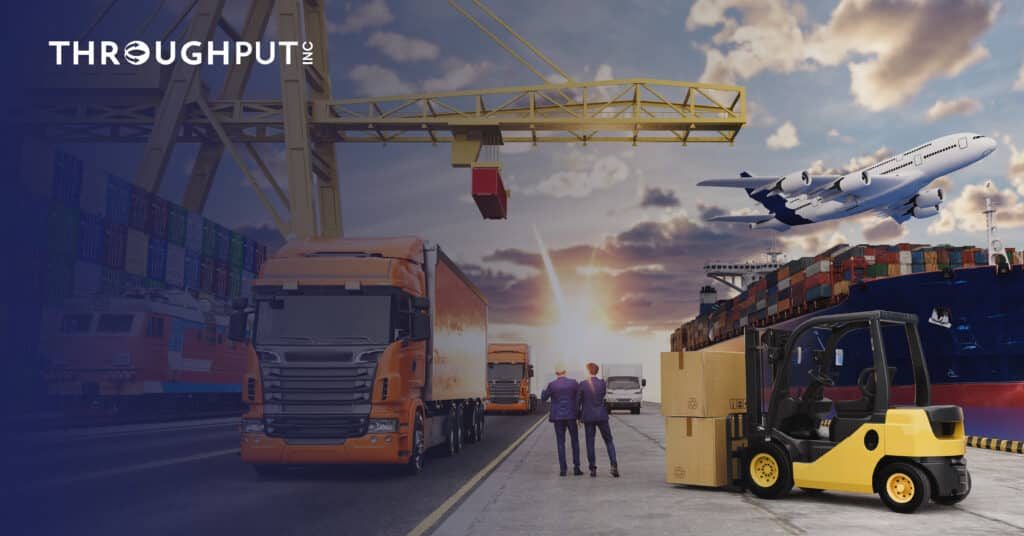In today’s competitive global economy, businesses must operate smarter, faster, and more efficiently. At the core of every successful enterprise are four critical functions: supply chain management, logistics, transportation, and operations. Although these terms are often used interchangeably, they represent distinct areas essential for ensuring seamless product flow, customer satisfaction, and cost efficiency.
Understanding the differences between supply chain, logistics, transportation, and operations is crucial for effective business planning, reducing delays, and controlling costs. This SEO-friendly guide will clearly define each function, explain how they interact, highlight their differences, and show why mastering all four drives competitive advantage.

Table of Contents
- What Is Supply Chain Management?
- What Is Logistics?
- What Is Transportation?
- What Is Operations?
- How Supply Chain, Logistics, Transportation, and Operations Work Together
- Key Differences: Quick Comparison Table
- Real-World Use Cases
- Why Understanding These Differences Matters
- Common Challenges in Each Function
- How AI and Automation Are Revolutionizing These Areas
- Which Function Should You Prioritize for ROI?
- Final Thoughts
- Frequently Asked Questions (FAQs)
1. What Is Supply Chain Management?
Supply chain management (SCM) oversees the end-to-end flow of goods from raw materials to the final customer. It is a strategic function that integrates procurement, manufacturing, logistics, and delivery processes along with partner collaborations.
Key Components of Supply Chain Management:
- Supplier relationship management
- Procurement and sourcing
- Inventory and demand forecasting
- Production planning and coordination
- Warehousing and distribution
- Returns processing and reverse logistics
- Risk management and sustainability initiatives
Goal: Deliver the right product, at the right place and time, at optimal cost while maximizing profitability.
Tip: Think of the supply chain as a synchronized value network driven by collaboration and data sharing.
What Is Logistics?
Logistics is a tactical subset of the supply chain focused on the efficient movement, storage, and handling of goods within and across organizations.
Core Logistics Activities:
- Order fulfillment
- Warehouse and inventory management
- Freight and shipping coordination
- Packaging and labeling
- Last-mile delivery and returns management
Goal: Ensure efficient, cost-effective movement and storage of goods.
Example: Amazon’s industry-leading two-day delivery relies on optimized logistics, not just fast transportation.
What Is Transportation?
Transportation is a specific logistics function dealing with the physical movement of products between locations.
Transportation Components:
- Fleet and carrier management
- Freight rate negotiation and optimization
- Route planning and shipment tracking
- Transportation Management Systems (TMS)
- Freight auditing and claims handling
Goal: Move goods swiftly, safely, and affordably while meeting service level agreements (SLAs). Transportation is critical but only one part of logistics.
What Is Operations?
Operations management focuses on internal processes that transform inputs into finished goods or services within the business.
Operations Functions:
- Production scheduling and workflow control
- Process efficiency and cost reduction
- Facility and equipment management
- Labor and workforce optimization
- Quality assurance and compliance
Goal: Maximize productivity and quality while minimizing waste and cost. Operations is the internal engine powering the supply chain.
How Supply Chain, Logistics, Transportation, and Operations Work Together
- Operations manufactures the product.
- Logistics stores and prepares it for shipment.
- Transportation moves the product to customers.
- Supply chain management oversees and synchronizes all these activities.
Delays or inefficiencies in one area cascade through the others, impacting customer experience and profitability.
Key Differences: Quick Comparison Table
| Aspect | Supply Chain | Logistics | Transportation | Operations |
| Scope | End-to-end system | Movement and storage | Physical goods movement | Internal production processes |
| Focus | Strategy and network design | Tactical execution | Shipment planning and routing | Production workflow efficiency |
| Includes | Procurement, manufacturing, logistics | Warehousing, shipping, fulfillment | Trucking, shipping, freight | Production, quality control |
| Key Metrics | Lead time, cost-to-serve | On-time in full (OTIF), storage cost | Delivery time, freight cost | Output volume, efficiency |
| Managed By | Supply Chain Director/VP | Logistics Manager | Transportation Coordinator | Operations Manager/Plant Head |
Real-World Use Cases
Retail Company:
- Operations manage fulfillment centers and workforce.
- Logistics coordinates inventory and customer deliveries.
- Transportation partners with carriers like FedEx for last-mile delivery.
- Supply chain balances demand and optimizes inventory flow.
Automotive Manufacturer:
- Operations handle assembly with just-in-time manufacturing.
- Logistics manages parts inbound and vehicle shipments outbound.
- Transportation oversees ocean freight and trucking.
- Supply chain sources globally and plans production schedules.
Why Understanding These Differences Matters
Misusing these terms can cause miscommunication and operational inefficiencies, especially in cross-functional teams or global settings. Clear understanding aligns KPIs, improves decision-making, and reduces finger-pointing.
Common Challenges in Each Function
| Function | Key Challenges |
| Supply Chain | Volatility, globalization, visibility gaps, ESG pressure |
| Logistics | Warehousing costs, labor shortages, SKU complexity |
| Transportation | Freight rate increases, port congestion, driver shortages |
| Operations | Lean production risks, demand variability, automation |
AI and digital tools are increasingly used to forecast, simulate, and respond faster to these challenges.
How AI and Automation Are Revolutionizing These Areas
- Supply Chain: AI-driven demand forecasting and inventory optimization
- Logistics: Machine learning automates warehouse functions and routing
- Transportation: AI-powered TMS reduces fuel costs and improves delivery times
- Operations: Predictive maintenance and real-time IoT optimize processes
Example: ThroughPut.AI uses existing ERP and supply chain data for smarter demand balancing without new tools.
Which Function Should You Prioritize for Maximum ROI?
- Manufacturers: Prioritize operations and logistics
- Retailers/Distributors: Focus on logistics and transportation
- Strategic Decision Makers: Start with end-to-end supply chain optimization
- Startups: Improve operations efficiency before scaling logistics
Addressing the area with the greatest inefficiencies or highest costs delivers the fastest return on investment.
Final Thoughts
Supply chain, logistics, transportation, and operations are not just buzzwords—they are foundational business pillars. Mastering their differences and integration enables proactive management, cost control, and exceptional customer service in today’s dynamic market.
Frequently Asked Questions (FAQs)
Q1: Is logistics part of the supply chain?
Yes, logistics is a vital component of the broader supply chain focused on moving and storing goods efficiently.
Q2: What is the main difference between logistics and transportation?
Logistics involves planning and managing the movement of goods, while transportation is about the physical movement itself.
Q3: How do operations differ from supply chain?
Operations focus on internal production processes; supply chain covers the entire product lifecycle, including external coordination.
Q4: Which function is most important?
All are important, but priority depends on industry, company size, and current challenges.
Q5: How can AI improve supply chain functions?
AI enhances demand forecasting, identifies bottlenecks, automates routing, and optimizes inventory management.


